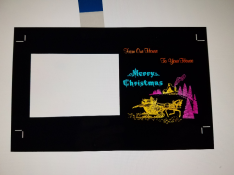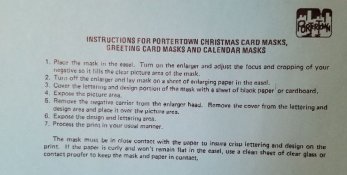RSImages
Member
- Joined
- Oct 7, 2015
- Messages
- 63
- Format
- 35mm
Over the last several years I've collected a handful of the Christmas card masks from Kodak. I vaguely remember seeing other companies selling something similar back when I was a kid.
I'm curious if anyone knows what the process was that they used to make them. Or what the process might look like today to create a mask that could be used in the darkroom. Easy enough of you wanted to do digital printing.
It seems like if you designed a greeting card in photoshop and printed it to white paper and then photographed the paper with it backlit you'd get texture in the negative from the paper and it would be difficult to get a sense negative. So I'm curious how they did it and what the hobbyists method would look like today.
I realize the original process would have been mechanized in some way and that a hobbyist couldn't easily replicate the process.
I'm curious if anyone knows what the process was that they used to make them. Or what the process might look like today to create a mask that could be used in the darkroom. Easy enough of you wanted to do digital printing.
It seems like if you designed a greeting card in photoshop and printed it to white paper and then photographed the paper with it backlit you'd get texture in the negative from the paper and it would be difficult to get a sense negative. So I'm curious how they did it and what the hobbyists method would look like today.
I realize the original process would have been mechanized in some way and that a hobbyist couldn't easily replicate the process.
Last edited:













